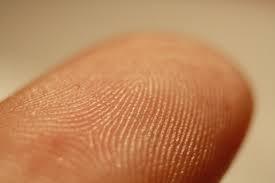Human DNA Profiling Bill: Invasion of Privacy at a Grand Scale
Political activists, who are part of a peaceful demonstration that the Government declares as unlawful, may soon find themselves as part of a massive database that the Government wishes to construct. The database, called the ‘National DNA Data Bank’ will contain the DNA profiles for a range of Indian citizens and ostensibly will be used to tackle crime and to trace or identify people for various reasons. You are likely to be part of the database if you are in minor violation of the Motor Vehicle Act. You personal information can become part of the database even if you are not convicted of any crime – even as a suspect or as a witness to a crime. In the UK there is a recorded case of a grandmother who was part of the crime database when her only crime was that she refused to return a football that was thrown by some children in to her garden! Once part of the system, at least theoretically, a person’s intimate private information can be called up every time a crime is being investigated in any corner of the country. With the creation of such a database the Indian state wishes to join the ranks of the US, UK and others who have converted surveillance of ordinary citizens into a fine art.
The NDA Government has placed the ill conceived and poorly thought through, “Human DNA Profiling Bill” for adoption by Parliament in the ongoing monsoon session. The first draft of the Bill was finalized in 2012 by the UPA government, and it appears that the present government is particularly interested in pushing it through. The Bill is being vigorously advocated for by the CDFD (Centre for DNA Fingerprinting and Diagnostics, Hyderabad) and supported enthusiastically by the Department of Biotechnology.

Image Courtesy: en.wikipedia.org
>Advances in science have placed at the disposal of governments massive technical power to gather data. Edward Snowden’s revelations in 2013 showed how the US Government has been, on a regular basis, gathering a massive amount of data about millions of individuals. This data was (and conceivably still is) being used by US agencies to spy on people on the mere suspicion that they constituted a threat to the US government. The Snowden episode alerted people across the world to how extremely powerful technologies are now available which can track almost every action of an ordinary individual – from cell phone usage, to internet chats to locations of people at different points of time. DNA profiling is, in a sense, many steps ahead in terms of the intimate nature of information that is sought to be collected and analysed by surveillance agencies. A person’s DNA stays with him till death (in fact even after death) and there is no conceivable way in which he can change or discard it. It is a permanent marker for all times to come and once it becomes part of a surveillance database the person is marked for life.
The Science Underlying DNA profiling
The science behind DNA profiling has been developed over the last 3 decades. In its bare essence DNA profiling is a method of recording the almost unique characteristics that are present in every individual’s DNA. DNA – Deoxyribonucleic Acid – is the building block of our basic genetic information that is stored in all the cells in our bodies. DNA molecules are made of sequences of nucleotides, and the different sequences act like codes which are interpreted to produce chemicals that determine the characteristics of a particular individual. A DNA profile is a small set of variations in a person’s DNA that is almost unique to that person. Thus a DNA profile is like a fingerprint, and hence the technique is also called DNA fingerprinting.
An individual’s DNA profile is created by recording simple sequences of nucleotides – also called ‘Short Tandem Repeats’ (STRs). In the latest technique used, 17 specific sites on a person’s DNA are targeted for recording of the sequences in each of these sites. If we discount identical twins, the sequences at the 17 sites put together, are practically unique to an individual – there is a 1 in trillion possibility of two individuals sharing the same sequences. Current technologies are able to read the sequences from even a very small fragment of a person’s DNA. Using a technique called PCR (Polymerase Chain Reaction) the information in a small fragment of a DNA molecule can be amplified over a million times, making detection of the unique sequences much easier.
The technique was developed as an aid to crime detection. If a crime suspect’s DNA is found to match with DNA present at the scene of a crime, then this is seen as evidence that the suspect was present at the crime scene. The simplest and relatively least intrusive method of collecting a sample of a person’s DNA is from a light scarping from inside the cheek (buccal mucosa). In situation where the person targeted is not available indirect methods of collecting the DNA are used – ranging from fallen strands of hair (or even from a hairbrush), from bodily fluids such as sputum (even from a toothbrush), blood from accidental cuts present at a scene being investigated or clothes worn by that person, semen that may be found in a crime scene involving rape, etc.
Immense potential for misuse and errors
The techniques used, thus, appear almost infallible. However the use of these techniques is by no means so. Faults creep into the system at two levels. While the technique is virtually foolproof -- that is it can almost unerringly identify an individual, it is so only if used under ideal conditions. Experience from three decades of use of DNA profiling as a crime detection technique has thrown up numerous examples of how wrong interpretations can often by drawn while using DNA profiling techniques. It needs to be understood that we shed cells from our body all the time – skin debris, sputum, blood from minor cuts, etc. etc. On most occasions we are not even aware that we are leaving a trail of our DNA wherever we go. But current techniques can actually trace our presence, almost anywhere, from this trail that we leave behind. This also means that DNA samples lifted from a crime scene, that would subsequently be used to identify a suspect, are very likely to be contaminated by the DNA of other people who may have nothing to do with the crime. Contamination of the sample, further, can happen at any stage from the collection of the sample right up to its analysis in the laboratory.
A real life case (known as the case of the Phantom of Heilbronn) shows the extent to which DNA evidence can mislead. Detectives across three countries – Austria, Germany and France – were confounded by the fact that the DNA of the same person kept cropping up in crime scenes across these countries and involving a range of crime such as burglary and murder. Eventually the DNA matched that in the burnt remains of an asylum seeker in France. It later transpired that somehow this DNA had contaminated cotton swabs used to collect the samples at the crime scene, and the swabs had all been produced at the same factory in Austria. There are even recorded incidents of false prosecution merely because of typographical errors while recording a person’s DNA profile. It is important to, thus, differentiate between the accuracy of the technique and its possible misuse because of errors that might creep in at any stage of crime detection. The real possibility of such errors would be amplified many times over when the reference point is not just DNA gathered from a single crime scene but a database that could encompass millions of individuals. Remember that there are an estimated 5 million people in the US database of DNA profiles (almost 2% of the population) and there were an estimated 7 million people in the UK database (over 10% of the population) before fresh legislation resulted in the deletion of millions of records.
Misuse as a weapon of surveillance
The possibility of the second level of uncertainty, while using DNA profiling systematically, is even more frightening. The technology of DNA profiling is neutral, that is it does not discriminate against any group of persons while acting as an identifier. But agencies that collect DNA profiles and those that use DNA profile databases are not neutral. Crime control agencies across the world are arms of the state and reflect the bias of the state against different sections of the population – based on ethnicity, class, caste, gender, sexual orientation, etc. When a state controlled agency is engaged in collecting data this bias would result in the already discriminate sections becoming the major proportion of the database. Thus the states surveillance system, supposedly designed to detect and control crime, focuses inordinately on certain social classes who are not part of the elite. Combine this with the earlier concern of false accusations arising from procedural errors, and we have the potential of gross misuse of the database to erroneously implicate people who are drawn from the poor, the under-privileged and those already facing social discrimination. That this is not merely a hypothetical concern is borne out by the draft Bill being discussed in India. The pro forma for collection of DNA profiles, in addition to collecting information on personal details such as name, place of residence etc, also asks for the caste of the person. Why is it important to record the caste status of a person on a database whose primary objective is crime detection. Does the Indian state believe that certain castes are more likely to be engaged in criminal activities?
The potential for misuse of the DNA database to target certain sections of the population increases when we take into account the way such databases are being used by security agencies in other countries. A common practice is ‘Familial DNA searching’. In this practice when an exact match is not found between DNA found at a crime scene and profiles in the database, near matches are searched for. Such ‘near’ matches would be likely to include close relatives of the person whose DNA was found at the crime scene. Criminal investigation agencies then question them to try to get information about the whereabouts of the person whose DNA was found at the crime scene. We thus arrive at a situation where a biased sample present in the database, representing inordinately the underprivileged and the socially discriminated, could be repeatedly harassed and targeted in the course of criminal investigations, even though the evidence does not point to any direct involvement.
Wide net to include people in the database
The potential of misuse of the database increases based on how wide the net is, that is used to collect DNA profiles. The draft Bill is a curious mishmash of different categories. In the first instance it includes all those incriminated by various sections of the Indian Penal Code (IPC) and for some specified “offences under special laws: (i) Immoral Traffic (Prevention) Act, 1956 (ii) Medical Termination of Pregnancy Act, 1971 (iii) Pre-conception and Pre-natal Diagnostic Techniques (Prohibition of Sex Selection) Act, 1994 (iv) Protection of Women from Domestic Violence Act, 2005 (v) Protection of Civil Rights Act, 1955 (vi) Scheduled Castes and the Scheduled Tribes (Prevention of Atrocities) Act, 1989 (vii) Motor Vehicles Act, 1988 (viii) Any other law as may be specified by the regulations made by the Board”. As we discussed at the beginning this would mean that almost all political activists would somehow be part of the database, as would people who have been indicted for minor infringements of the Motor Vehicles Act. The Bill provides that all those who are accused (not necessarily found guilty) would be required to provide a DNA sample and would be inducted in the database. The Bill does have a provision for removal from the database if acquitted. However, given the huge delays that can take place in the Indian judicial system, even those who get acquitted could form part of the database for years and thus their profiles can be called up whenever a crime is being investigated. Clearly the concept that a person is innocent till found guilty does not find resonance in the Bill.
There are various other categories of people who are to be included in the database, including witnesses to crimes, DNA profiles of unclaimed and unidentified bodies (including those dying in natural disasters), missing persons and volunteers. This would make the database particularly unwieldy and further open to abuse. The Mint newspaper in an article in 2012 quotes Jeremy Gruber, President at the US-based Council for Responsible Genetics in this regard. Commenting on the Indian Bill: “No other country in the world mixes their law enforcement database with databases of innocent individuals in this way. Indeed, since very few crimes actually involve DNA, its collection for crimes for which DNA evidence isn’t relevant serves no safety purpose— its primary purpose is surveillance”.
Invasion of privacy beyond crime detection
Critics of the Bill also raise concerns regarding privacy, especially when the ambition appears to be to create a behemoth of a database. Concerns regarding privacy are not addressed adequately in the form of proper safeguards as regards informed consent of those whose DNA profiles are collected, especially if they have not been convicted of a crime. Data in DNA profiling can also be used to determine parentage and this is another potential for misuse unless proper safeguards regarding consent for use of the data is built into the proposed system.
The Bill details the ambitions regarding the use of the database and these clearly go way beyond crime detection. The potential uses of the database listed in the Bill include – to identify victims of accidents or disasters, to identify missing persons, and for civil disputes and other offences. It also allows the information to be used to create population statistics, identification research, parental disputes, issues relating to reproductive technologies and migration. Very clearly the proposed database is not an innocent tool to fight crime. It is a tool to mount a systematic surveillance system with scant regard for citizens’ human rights and right to privacy. This has to be read along with the recent statement by a counsel of the Indian government in a case involving the legality of the Aadhar Card system under the Unique Identification Authority of India (UIDAI) that the right to privacy is not a fundamental right.
Flawed regulatory mechanisms
Usha Ramanathan, senior legal expert, who was a member of the expert committee to review the Human DNA Profiling Bill, has pointed out several other concerns pertaining to the Bill. She faults the constitution of the DNA Profiling Board, as laid out in the Bill for being packed with senior law enforcement officials and government functionaries. She writes: “The DNA profiling board as proposed is a collective of persons who, together, are akin a self regulatory body, and is dominated by persons who are within the system, including scientists and intended users of the database. There is very sparse representation outside of this”.
She further points to the clear conflict of interest issues that arise due to the proposal in the Bill to designate the CDFD (Centre for DNA Fingerprinting and Diagnostics, Hyderabad) as the regulator. She writes: “The CDFD also expects to be doing a lot of work that will be generated if this draft bill passes into law. Given this background and the anticipated role of the CDFD if the plans laid out in the Working Group documents were to materialize, there would be a conflict of interest, lack of accountability, and it would not conform to the rules of natural justice, nor to fairness, to have the CDFD in the capacity of regulator..”
Powerful weapon for the surveillance state
Clearly the BJP government is pressing forward to get the ‘Human DNA profiling Bill’ enacted by Parliament, premised on its own view that the privacy of millions of Indians can be violated with impunity. The technology of DNA profiling places enormous power in the hands of the Indian state. Repeated acts of violation of individual rights to privacy by government agencies have come to light in the past few years. The DNA profiling Bill, if passed by Parliament would become a powerful weapon in the arsenal of the Indian state to carry out surveillance on the Indian people at a grand scale.
Disclaimer: The views expressed here are the author's personal views, and do not necessarily represent the views of Newsclick
Get the latest reports & analysis with people's perspective on Protests, movements & deep analytical videos, discussions of the current affairs in your Telegram app. Subscribe to NewsClick's Telegram channel & get Real-Time updates on stories, as they get published on our website.
























